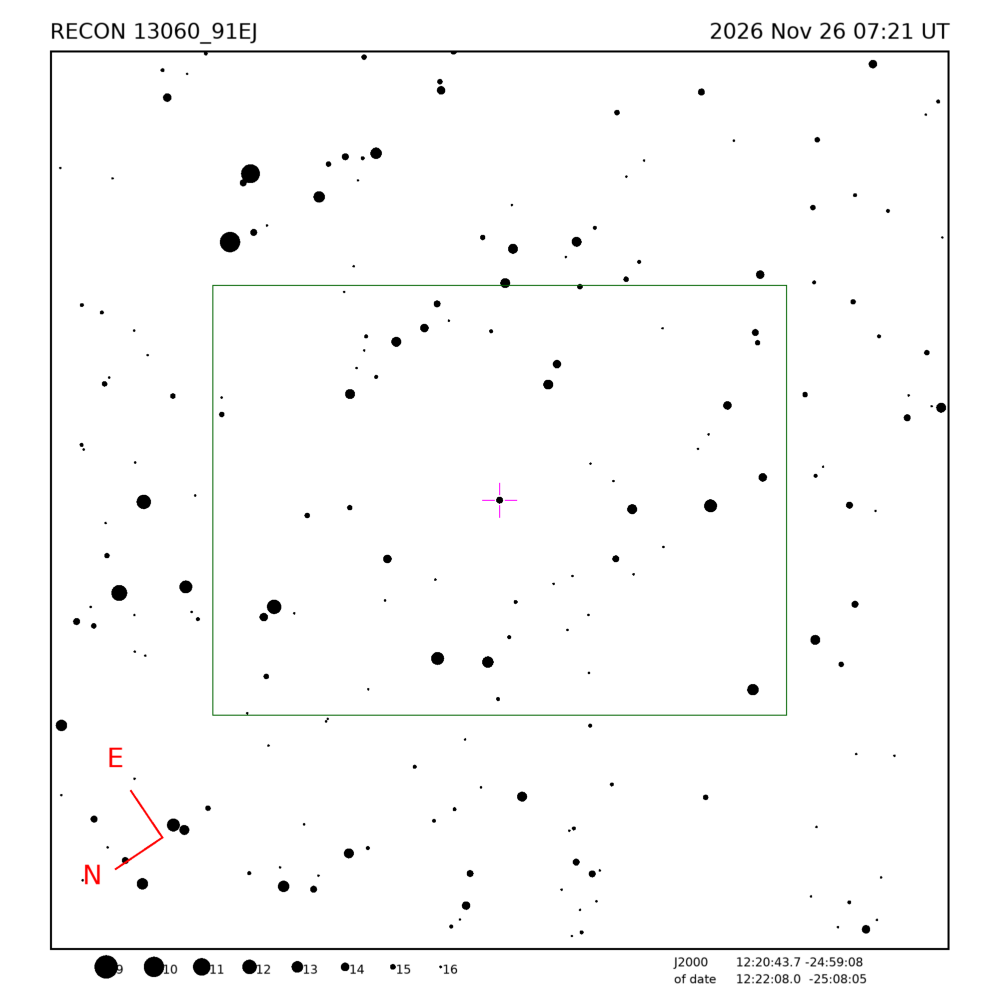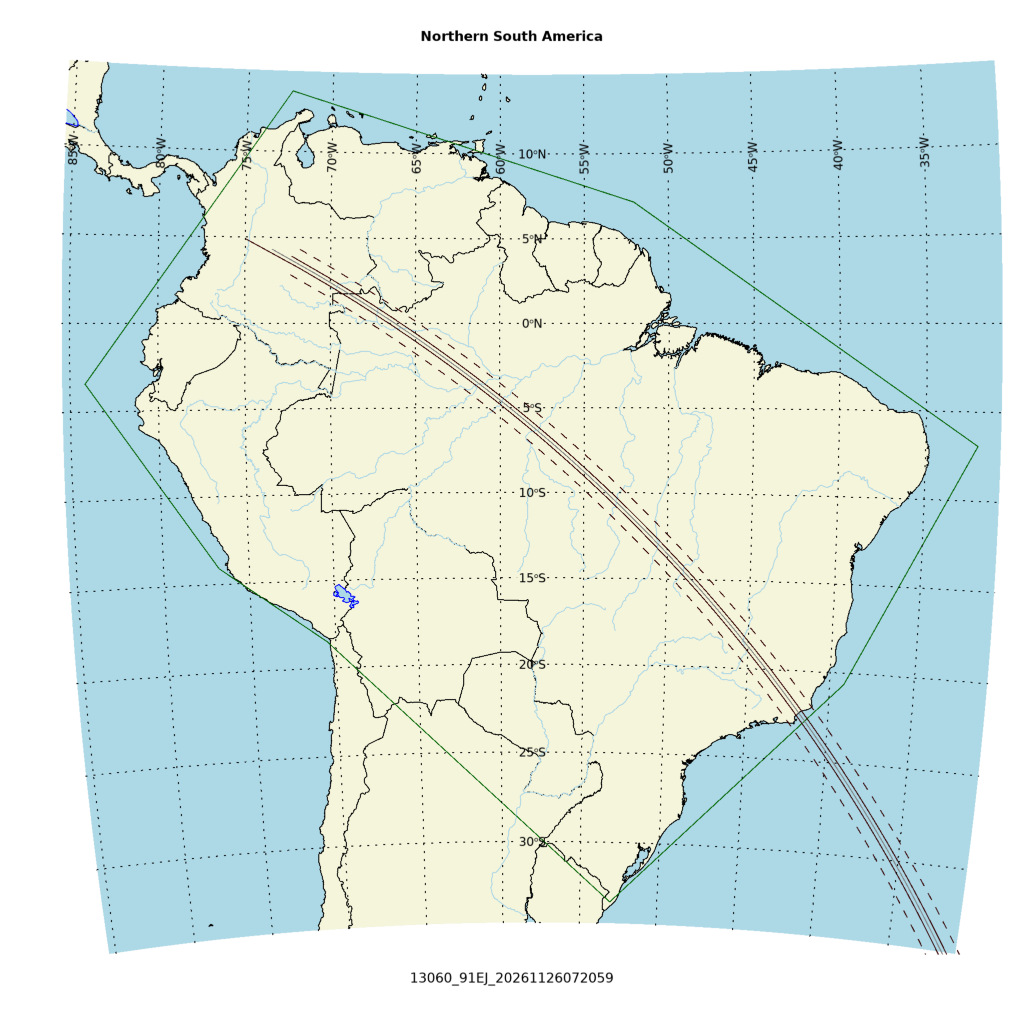
Occultation event with (13060) 91EJ, event index number 4889
Regions able to see the event: SAmericaN
Geocentric closest approach at 2026/11/26 07:20:59 UTC
J2000 position of star is 12:20:43.7 -24:59:08
Equinox of date position of star is 12:22:08.0 -25:08:05
Star is 108 degrees from the moon. Moon is 96% illuminated.
Stellar brightness G=15.0, apparent brightess of occulting body is G=17.0
Use an exposure time of 0.25 seconds with the standard RECON-QHY system.
SNR of 4.1 per integration for unocculted signal
Expected flux drop is 86% with SNR of 3.5 for the occulted depth (per occulted point)
Apparent velocity is 32.2 km/sec on the sky relative to the star, or, 25.3 arcsec/hr.
Position angle of asteroid motion is 129.1 degrees
The recommended exposure time corresponds to 8.0 km per image.
The 1-sigma error in the time of the event is 1.1 seconds.
The 1-sigma cross-track error in the shadow position is 18.2 km.
The sky-plane scale is 4585.1 km/arcsec.
Diameter estimates:
41.9 km assuming a 5% albedo, maximum of 1.3 sec for a central chord
17.1 km assuming a 30% albedo, maximum of 0.5 sec for a central chord
Cross-track diameter of 36.1 km used for deployment plan.
Star training set for 13060_91EJ, (2026/11/26 07:21UT) Object RA Dec mag sep mel Spica 13:26:36.9 -11:18:03 1.0 20.60 116 9Bet Crv 12:35:48.4 -23:32:43 2.6 3.50 110 PPM 260174 12:21:19.6 -26:53:10 6.5 1.76 108 PPM 260291 12:25:46.1 -25:21:37 8.3 0.85 108 PPM 260217 12:22:55.8 -25:05:43 9.9 0.18 108 13060_91EJ 12:22:08.0 -25:08:05 17.0 108 Positions are for equinox of date


Star training set for 13060_91EJ, (2026/11/26 07:21UT) Object RA Dec mag sep mel Spica 13:25:11.5 -11:09:41 1.0 20.60 116 9Bet Crv 12:34:23.2 -23:23:50 2.6 3.50 110 PPM 260174 12:19:55.2 -26:44:13 6.5 1.76 108 PPM 260291 12:24:21.5 -25:12:41 8.3 0.85 108 PPM 260217 12:21:31.4 -24:56:46 9.9 0.18 108 13060_91EJ 12:20:43.7 -24:59:08 17.0 108 Positions are for J2000